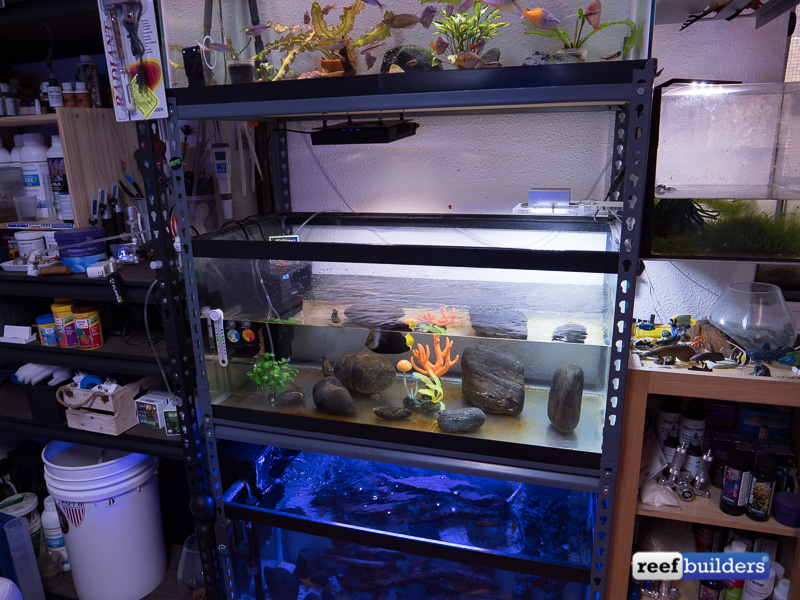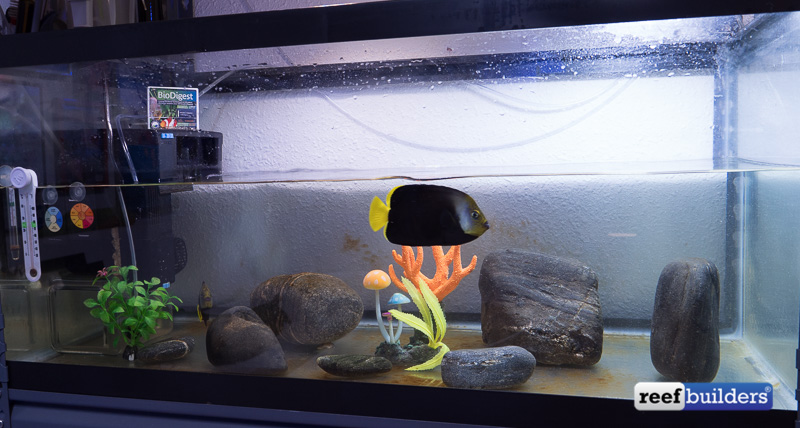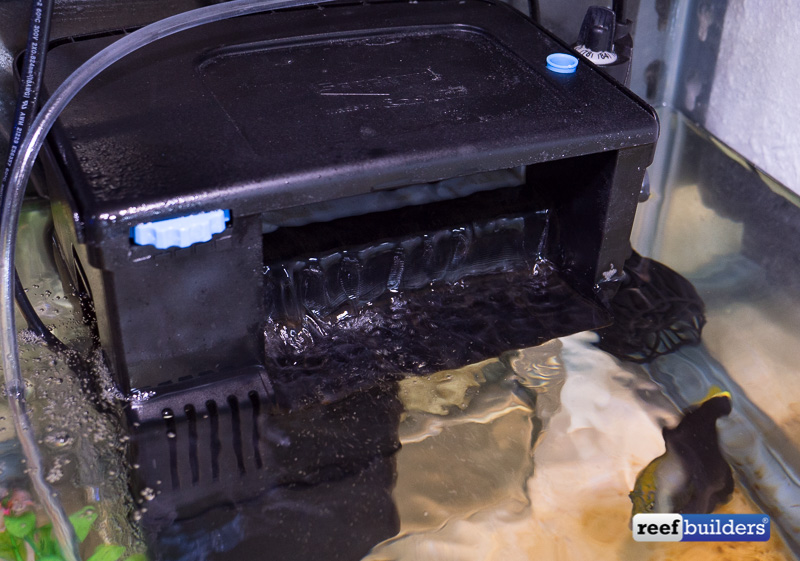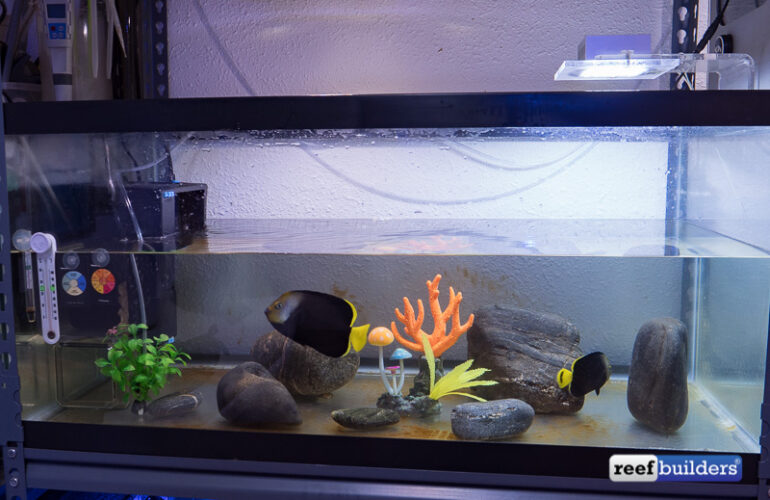I must really like quarantine tanks because it seems like I’ve set up more of them than actual fish tanks over the years. There’s something about knowing you have the perfect environment to do whatever is necessary to acclimate a fish to captive life that is really satisfying. They can also make a fascinating display on their own.
I know many, if not most, reefers take the dump-and-pray approach to adding fish to their reef tanks but so many avoidable problems can be traced back to one instance of adding a dirty fish to your reef. Besides, it’s nice to know you can feed fish in the quarantine tank to your heart’s content without fear of causing massive algae outbreaks, or significantly impacting the nutrients in a well-balanced reef tank.

These benefits along with being able to treat whatever disease might crop up is one reason I kind of enjoy having a quarantine tank, some of which end up being the beginning of a new fish tank. So today I’m going to walk you through some of the key elements I think are paramount to having a successful setup within which to quarantine new saltwater fish.
First of all, you really don’t want the tank to be too large of a volume. Even if you have say a 29 gallon or a 40 gallon breeder, such as I’m using right now, there’s no rule that says you have to fill it up all the way. Having a smaller volume means you have less water to change, less medicine to add, and can quickly do larger water changes if necessary, especially in the beginning of the setup when you might have the tank fully biologically cycled.

The ability to run the tank at ‘half-mast’ will depend somewhat on the type of filtration used, internal filters and sponge filters work well, but for this setup I’ve gone with the new Seachem Tidal power filter. This filter is fully submersible, although it was really intended to hang on the side of an aquarium, and I have mine resting on some square glass vases to elevate them to the desired height.
I really like the media basket approach to the Seachem Tidal power filter as well as its surface skimming ability, and the quick-access dial on the front to turn down the water flow when servicing the media or when feeding.

Since I live at high elevation I really feel it’s important to add extra aeration to my aquariums and for this reason I like to use a single air stone powered by a small air pump. In this quarantine aquarium I’ve placed the stone right under the intake of the power filter to give it wet-dry super powers and to ensure thorough aeration of the tank and the biomedia.
Sometimes but not always, I will add a small powerhead to get extra water movement in the aquarium – this helps to leverage the tank itself as a biological filtration surface. This practice also keeps food in suspension where it can be either eaten by the fish, or captured by the filter.
But to be honest, I added a particularly strong powerhead to this setup because the Black Phantom angelfish currently inside it do prefer strong water flow and it really made them more comfortable and it even seemed to help clear up their skin and fins which was showing a variety of ‘irregularities’ which weren’t full blown disease.

I’m also an adamant user of BioDigest by Prodibio, which are vials of lab-grown bacteria that do much more than just help the biological cycle. Not only does the addition of Biodigest reinforce the nitrification process, but I believe that adding these bacteria strains has a prophylactic effect to reduce other bacterial infections from occurring.
When the tank (and the fish) are newer I tend to add Biodigest about once a week, right after water changes, but then I will fall back to adding it about once a month. However I do not add any bacterial stimulants or foods such as Bioptim because these bacteria are being added to outcompete more dangerous strains, and not to remove excess nutrients, so there’s no need to offer any fuel to the overall bacteria population.

Last but not least, you gotta have at least one thermometer and an Ammo Alert. Temperature is critical in keeping any healthy reef tank. Since I don’t trust any single thermometer, I keep two in the tank to monitor their discrepancy and split the difference. Finally the Ammo Alert is so clutch for alerting aquarists to any potential rises in ammonia concentration either due to incomplete cycling, too much food, or undiagnosed filter problems.
Setting up a quarantine tank shouldn’t be a chore, it should be an enjoyable part of the aquarium process, It’s a place where you can ensure the health and vitality of your fish before adding to the main reef or fish aquarium system. It’s also a special place where aquarists can bond with their new fishy friends, transforming them from a skittish wild fish to a relaxed, acclimated pet which will associate you with the food and constantly beg for food at the front of the tank or the water surface.




